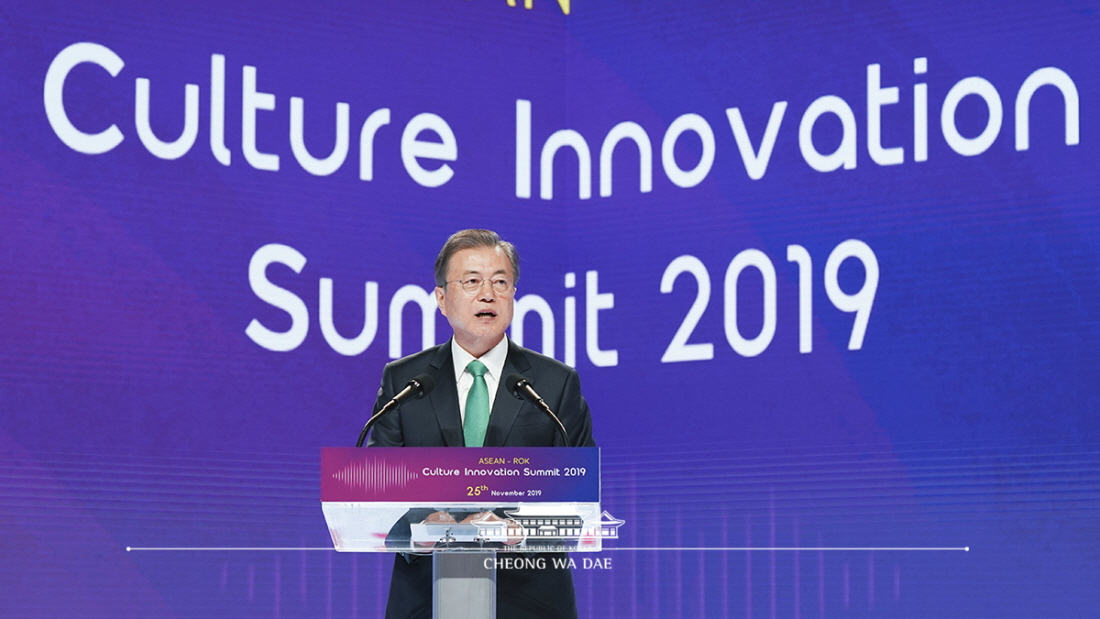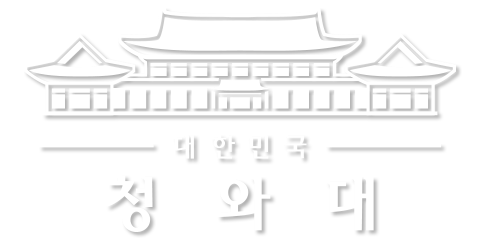이 웹사이트는 제19대 대통령 임기 종료에 따라 대통령기록관이 「대통령기록물 관리에 관한 법률」에 의해 이관받아 서비스하는 대통령기록물입니다. 자료의 열람만 가능하며 수정 · 추가 · 삭제는 불가능합니다.
다만, 「개인정보보호법」에 의하여 개인의 정보를 보호받기 원하시는 분은 관련 내용(요청자, 요청내용, 연락처, 글위치)을 대통령 웹기록물 담당자(044-211-2253)에게 요청해 주시면 신속히 검토하여 조치해 드리겠습니다. 감사합니다.
SPEECHES & REMARKS
BRIEFINGS
Welcoming Remarks by President Moon Jae-in at ASEAN-ROK Culture Innovation Summit

His Excellency Prime Minister Prayut, His Excellency Prime Minister Thongloun and Her Excellency State Counselor Aung San Suu Kyi,
It’s now early winter in Korea. Formerly, people in East Asia would use the seasonal winds – southwesterlies in summer and northeasterlies in winter – to ply the oceans. The season for northeasterlies was the time when the people in Northeast Asia would sail to Southeast Asia.
Here we are in Busan, a gateway to the Southeast. Feeling the excitement my ancestors must have experienced when meeting travelers from the ASEAN region, let me extend a warm welcome to the ASEAN leaders who have come to the ASEAN-ROK Culture Innovation Summit.
During the past two years, I’ve visited all 10 ASEAN member nations. I saw diverse peoples, languages, religions and cultures coexisting harmoniously. I also keenly felt ASEAN’s cultural and artistic inclusiveness and dynamism.
Spices from Southeast Asia transformed culinary arts worldwide as well as the history of international trade. In the same way, the colors and flavors of the 10 ASEAN states have festooned “K-culture,” turning it into a diverse cultural banquet and helping it emerge as new cultural content. ASEAN’s content market is growing by at least 8 percent annually, inspiring the dreams of future generations.
Cultures in ASEAN are diverse yet harmonious. The more the rest of the world learns about these cultures, the happier and richer their own lives can become.
ASEAN cultures are already known worldwide, and their potential is unlimited.
In 1978, Filipino singer Freddie Aguilar sang “Anak” in Tagalog, his mother tongue, to the delight of fans in Korea and around the world. Thai film director Apichatpong won the Palme d'Or at the 2010 Cannes Film Festival, demonstrating Asian movie-making capabilities to the world.
ASEAN leaders,
If ASEAN and Korea team up, ASEAN cultures can be loved more by the world. I am here to propose that K-culture and the cultures of ASEAN go after the global market together.
Hallyu, or the “Korean Wave,” first appeared in the 1990s, and its momentum has enabled Korea to rise to 7th place in the global content sector. Exports of Korean cultural content have averaged 16 percent annual growth for the past five years. Last year, they topped US$10 billion in value.
Hallyu got its start in Asia. Asians were first to embrace uniquely Korean content, and ASEAN consumers were at the center of this movement. ASEAN fans’ love for Korean cultural content has allowed it to spread worldwide.
Cultural content today has moved beyond mere culture to become a highly-promising growth industry. Korea, building upon this cultural identity, will become a partner for ASEAN cultural content.
I also propose that the Culture Innovation Summit arranged today to celebrate the ASEAN-ROK Commemorative Summit be regularly held from next year. We can work together with ASEAN to penetrate the global culture market. We will strive to develop this forum into a cooperative platform for cultural exchanges that can deepen mutual understanding and friendship among the generations to come.
The ASEAN-Korea Centre, Asia Culture Center and the only ASEAN Cultural House outside Southeast Asia will actively pursue two-way cultural exchanges that promote the brilliant cultures of the ASEAN region.
We will also work to preserve cultural diversity and creativity. We will establish an organization for promoting collaborative filmmaking projects between Korea and ASEAN member countries, in support of ASEAN’s dynamically growing film industry. The “Future with Art Campaign” will also allow us to expand our cooperation in providing youth with education in culture and the arts.
Respect for all people is strong in both ASEAN and Korea. We both seek peace, inclusiveness and innovation. A way to create a sustainable world also lies within Asia’s cultures.
I believe our cultural cooperation will not only generate new kinds of economic value but also become a force for opening up a new era.
Thank you.



